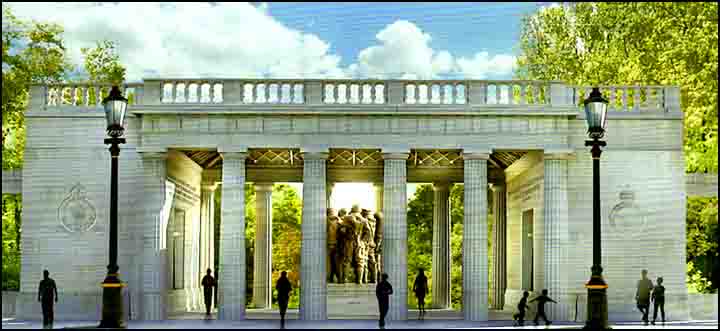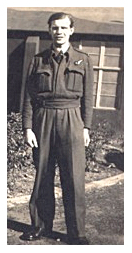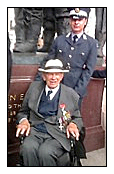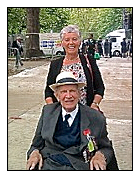
Click on one of the following LINKS to view the main sections of the Site :-

BOMBER COMMAND MEMORIAL AND THE NOTABLE ROY WHIPPLE, D.F.C.
Unhappily, Roy died in June last and his funeral was held at St. Barnabas Church, Penny Lane, Liverpool on the 5th July. A number of Collegiate Old Boys attended his funeral, including Joe Lucas, Chairman of the Council. The Church was full, which was a fitting testament to both Roy`s involvement in local activities and the high esteem in which he was held. Roy was a staunch member and supporter of the Association and we will miss him very much. |
 Visitors to this website and readers of the COBA Newsletter will be familiar with the name of Roy Whipple, D.F.C. who attended the Collegiate between 1928 and 1935. An active member of the Association and now over 90 years of age, he has regularly attended our Annual Dinner and the Remembrance Day service in the School Building in Shaw Street – at which he has laid a poppy wreath at the 2nd World War memorial in the Entrance Hall.
Visitors to this website and readers of the COBA Newsletter will be familiar with the name of Roy Whipple, D.F.C. who attended the Collegiate between 1928 and 1935. An active member of the Association and now over 90 years of age, he has regularly attended our Annual Dinner and the Remembrance Day service in the School Building in Shaw Street – at which he has laid a poppy wreath at the 2nd World War memorial in the Entrance Hall.
Members of the Collegiate Old Boys` Association will recall that the Association made a contribution to the National Fund to create a memorial for those who had lost their lives and served in Bomber Command during World War 2.
Having been invited to the unveiling of the Memorial in London on the 28th June last, Roy has been persuaded to provide the following account of his background and attendance at the ceremony. We are grateful to his daughters, Carol and Hilary, in helping in this connection.
 I
started at the Liverpool Collegiate in 1928, went on to study Classics
at Oxford University and graduated in 1939. I returned then to Liverpool
to find work and shortly after my return War was declared. I cycled to
Oxford and back to enlist. It took me all day each way, as we didn`t have
gears on the bicycles then. I continued to work in a temporary job in
the Education Department in Liverpool until receiving notice to commence
training in the R.A.F.
I
started at the Liverpool Collegiate in 1928, went on to study Classics
at Oxford University and graduated in 1939. I returned then to Liverpool
to find work and shortly after my return War was declared. I cycled to
Oxford and back to enlist. It took me all day each way, as we didn`t have
gears on the bicycles then. I continued to work in a temporary job in
the Education Department in Liverpool until receiving notice to commence
training in the R.A.F.
After initial training, I was posted to R.A.F. Anstey in the Midlands, which was an elementary flying training school. I flew solo in Tiger Moths, but having taken too long with the training, was remustered as an Observer in Paignton, Devon. This was followed by navigation training at Staverton in Gloucestshire, and then stationed in the Isle of Man for bombing and gunnery training.
Having completed training I was posted to an operational training unit in Kinloss, until my commissioning came through. After completing one hundred and twenty three hours of daytime flying and thirty five hours of night flying, I was posted to 102 Squadron in Yorkshire, where I started my operational flying.
My first operational flight was on the 19th July, 1941, when we bombed Cologne. This was followed by Hanover, Frankfurt, Berlin and Dortmund. Most of the raids involved marshalling yards, docks and factories. On the 14th August, 1941, we crash landed after a trip to Hanover. These flights were in Whitleys, and mostly at night when there was a full moon or bright moonlight. We flew many trips, two or three a week, totalling 101 hours of daytime flying, and 188 hours of night flying. The Squadron then moved to Dalby, which is also in Yorkshire, in order for the Squadron to convert to Halifaxes.
In May, 1942, the Squadron went on its first raid in the new aircraft as part of `The Thousand Bomber Raid` to Cologne. I became the Squadron navigational officer for 102 Squadron and briefed the crews on their route, not having as many flights myself, but taking part in raids on Essen, Bremen, Hamburg and Dusseldorf. When I finished operational flying I was awarded the D.F.C.
I was by then a Squadron Bombing Leader, and posted to a conversion unit for crew training on Halifax bombers, as a Bombing Leader. The Halifaxes were based in Yorkshire, while the Lancasters were based mainly in Lincolnshire, along with the Stirlings. About a year later, I was appointed Base Navigational Officer at Driffield, overseeing the navigation of three squadrons.
Not a day too soon, in fact 67 years after the event, a Memorial to the 55,573 Airmen who died, nearly half of the 125,00 Bomber Command crews, was unveiled in Green Park, London on Thursday, 28th June, 2012, following 7.5 million pounds  raised by public appeal.
raised by public appeal.
One of my daughters and I were lucky enough to attend the unveiling ceremony, and we travelled from Liverpool by taxi, driven by `Bobby` a true Scouser whom we had met on various trips in his black cab. We travelled the day before, staying overnight at Luton so that we could be in our seats by 10.00 a.m. the following morning. We arose early next day at 6.00 a.m. and left for Green Park. It was a hot sunny day (80 degrees) and once in our seats, we were entertained by celebrities from radio, television and several bands.
 No
fewer than ten members of the Royal Family attended the event, with Her
Majesty the Queen performing the unveiling of the amazing monument. Prince
Charles took the trouble to speak to many of the veterans and he asked
me what I thought of flying in a Halifax.
No
fewer than ten members of the Royal Family attended the event, with Her
Majesty the Queen performing the unveiling of the amazing monument. Prince
Charles took the trouble to speak to many of the veterans and he asked
me what I thought of flying in a Halifax.
After the Service there was a `Fly Past` and 55,000 poppies were dropped onto the assembled veterans, guests and spectators. It was a very moving day, and although I did not meet up with any of the veterans I had served with, I did meet with many who had served with other squadrons and had similar stories to tell.
We arrived back at Liverpool later that day after being collected by Bobby, feeling rather tired after a long journey and having experienced a very exceptional day
.© Liverpool Collegiate Old Boys' Association (2018)